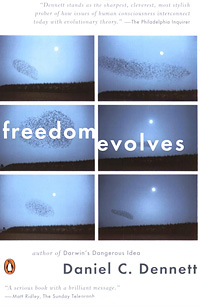The Bible Code is numerological nonsense masquerading as science
In the epilogue of In Memoriam A.H.H., Alfred, Lord Tennyson captured the essence of the quest for a single unifying principle and purpose in nature: “One God, one law, one element,/And one far-off divine event,/To which the whole creation moves.”
The noble dream of finding teleological succor in the march of time has become big business, as demonstrated by works from Hal Lindsey’s 1970s blockbuster The Late Great Planet Earth to today’s Left Behind series, by Tim LaHaye and Jerry B. Jenkins. (Both are said to have sold in the tens of millions.) And if you can sprinkle your homiletics with scientistic jargon, so much the better. The latest and most egregious example of the (mis)use of science in the (dis)service of religion is Michael Drosnin’s Bible Code II, enjoying a lucrative ride on the New York Times best-seller list, as did the 1997 original. (continue reading…)
Comments Off on Codified Claptrap
A review of David G. Myers’ Intuition: It’s Powers and Perils.
Imagine yourself a contestant on the classic television game show Let’s Make a Deal. You must choose one of three doors, behind one of which is a brand new automobile (while the other two harbor goats). You choose door number one. Host Monty Hall, who knows what is behind all the doors, shows you what’s behind door number two, a goat, then inquires: would you like keep the door you chose or switch? It’s 50/50 so it doesn’t matter, right? (continue reading…)
read or write comments (7)
Purported sightings of Bigfoot, Nessie and Ogopogo fire our imaginations. But anecdotes alone do not make a science
The world lost the creators of two of its most celebrated biohoaxes recently: Douglas Herrick, father of the risibly ridiculous jackalope (half jackrabbit, half antelope), and Ray L. Wallace, paternal guardian of the less absurd Bigfoot.
The jackalope enjoins laughter in response to such peripheral hokum as hunting licenses sold only to those whose IQs range between 50 and 72, bottles of the rare but rich jackalope milk, and additional evolutionary hybrids such as the jackapanda. Bigfoot, on the other hand, while occasionally eliciting an acerbic snicker, enjoys greater plausibility for a simple evolutionary reason: large hirsute apes currently roam the forests of Africa, and at least one species of a giant ape — Gigantopithecus — flourished some hundreds of thousands of years ago alongside our ancestors.
Is it possible that a real Bigfoot lives despite the posthumous confession by the Wallace family that it was just a practical joke? Certainly. After all, although Bigfoot proponents do not dispute the Wallace hoax, they correctly note that tales of the giant Yeti living in the Himalayas and Native American lore about Sasquatch wandering around the Pacific Northwest emerged long before Wallace pulled his prank in 1958. (continue reading…)
read or write comments (2)
A review of Daniel C. Dennett’s Freedom Evolves.
Next to the question of God’s existence there is arguably no greater conundrum in Western thought than the problem of free will and determinism, and the two are inextricably interdigitated. God’s omniscience and (continue reading…)
read or write comments (8)
The Three Laws of Cloning will protect clones and advance science
In his 1950 science-fiction novel I, Robot, Isaac Asimov presented the Three Laws of Robotics: “1. A robot may not injure a human being, or, through inaction, allow a human being to come to harm. 2. A robot must obey the orders given it by human beings except where such orders would conflict with the First Law. 3. A robot must protect its own existence as long as such protection does not conflict with the First or Second Law.”
The irrational fears people express today about cloning parallel those surrounding robotics half a century ago. So I would like to propose Three Laws of Cloning that also clarify three misunderstandings: 1. A human clone is a human being no less unique in his or her personhood than an identical twin. 2. A human clone has all the rights and privileges that accompany this legal and moral status. 3. A human clone is to be accorded the dignity and respect due any member of our species.
Although such simplifications risk erasing the rich nuances found in ethical debates over pioneering research, they do aid in attenuating risible fears often associated with such advances. It appears that the Raelians have not succeeded in Xeroxing themselves, but it is clear that someone, somewhere, sometime soon is going to generate a human clone. And once one team has succeeded, it will be Katy bar the door for others to bring on the clones. (continue reading…)
Comments Off on I, Clone






